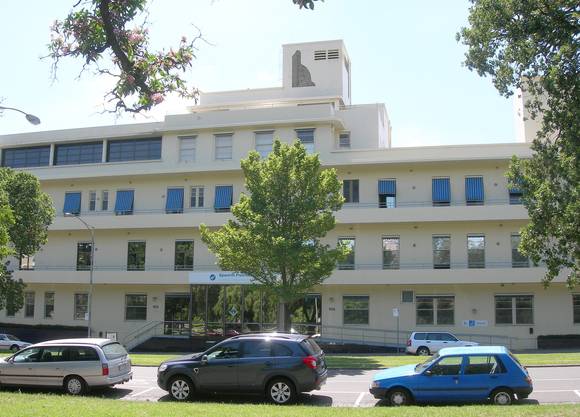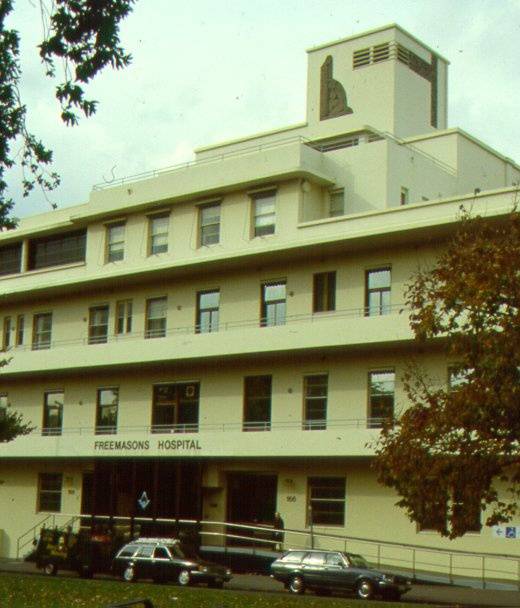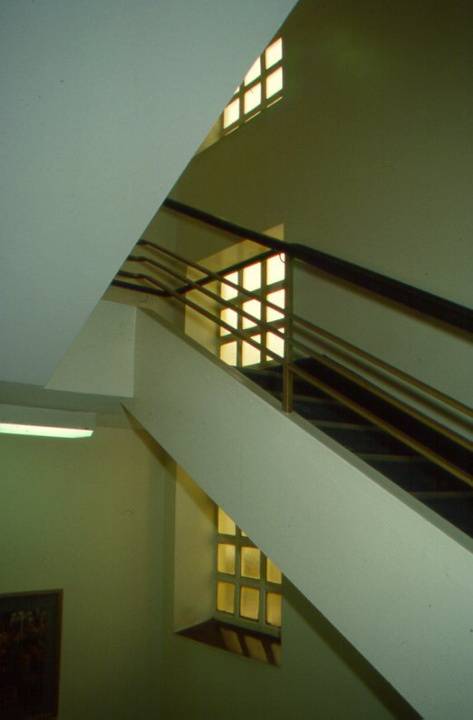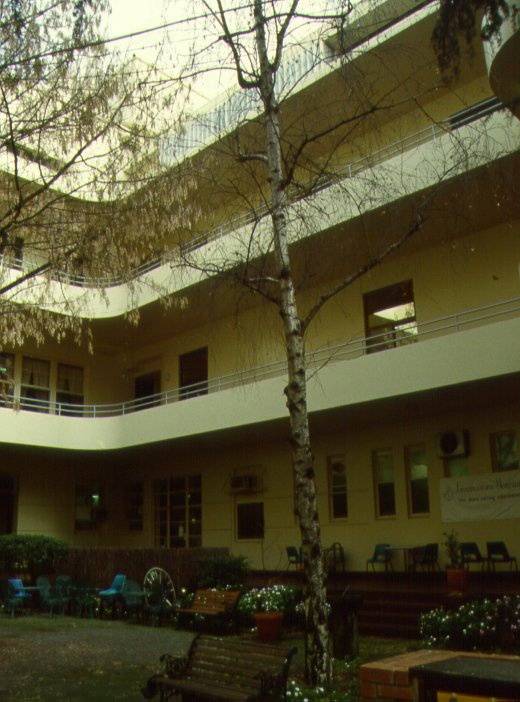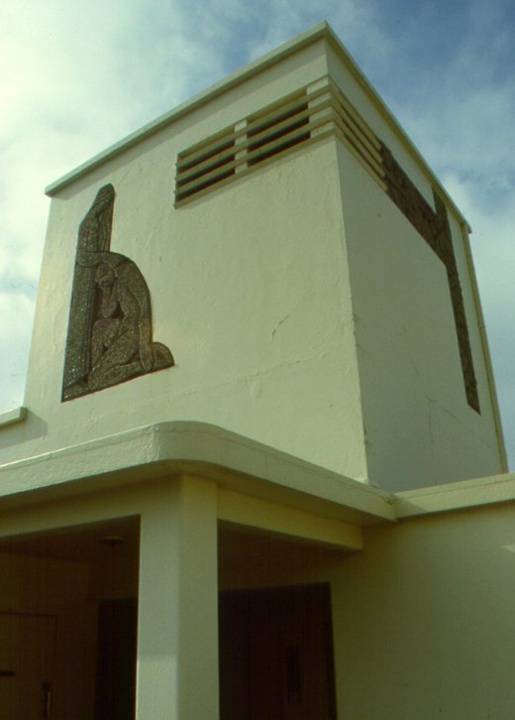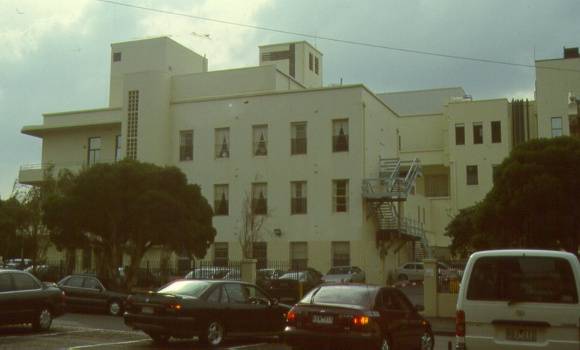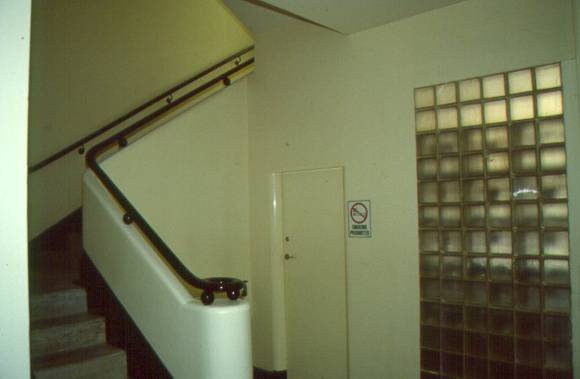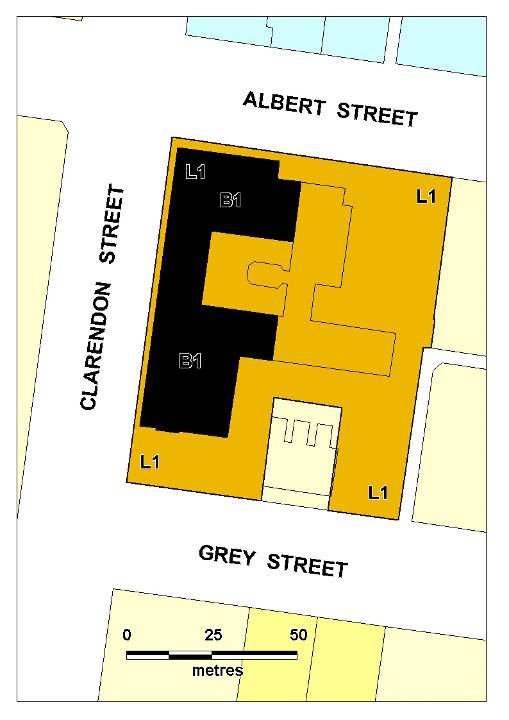| Back to search results » | Back to search page » |
|
FREEMASONS HOSPITAL
Location166 CLARENDON STREET EAST MELBOURNE, MELBOURNE CITY
File NumberPL-HE/03/0371LevelRegistered |
|
Statement of Significance
What is significant? The original five level reinforced concrete building, designed by architects Stephenson and Meldrum (later Stephenson and Turner) in the inter-war Functionalist style, was built by J R & E Seccull in 1936-37. The white cement rendered exterior was trimmed in Masonic blue, a pale shade on the balcony soffites and dark blue ceramic tiles highlighting the main entrance. A relief figure group representing the Freemason's crest and a geometric relief sculpture by Melbourne artist W L Bowles (1885-1954) is featured on walls of the lift motor room above the main entrance. The Freemasons clearly intended to extend the hospital or its facilities to adjacent land extending to Albert Street.In 1956-58 the hospital was substantially enlarged when the building was extended to a sympathetic design by architects Meldrum and Noad, making particular reference by its continuing balconies to the original. The extension has long been publicly regarded as integral part of the Freemason's Hospital. Further wings to the east were added in 1968 and 1977, and the front entrance was subsequently altered. Apart from respecting the scale of the original, these changes did not contribute to the cultural heritage significance of the hospital. How is it significant? Why is it significant? The Freemasons Hospital is a seminal example from Australia's great inter-war hospital building era, where hospitals became an identifiable building type of their own, and their design became the province of a number of specialist architecture firms. It is a significant early example of the work of Stephenson & Meldrum, later Stephenson & Turner, which became Australia?s largest architectural practice. Commenced by Arthur George Stephenson (1890-1967) in the 1920s the firm specialised in hospital design. In 1954 Stephenson was knighted for services to architecture and became the first Australian to receive a Royal Institute of British Architects Gold Medal. He was awarded the Royal Australian Institute of Architects gold medal in 1964. The hospitals designed by Stephenson in the 1930s and 1940s, based on European modern movement principles, led the progress towards Australian functionalist modernism. Stephenson chose the modernist idiom for hospital design as it suited the advanced scientific, medical, and programmatic principles of the institution, and the functionalist expression allowed for simple planning and honesty of expression. The Freemasons Hospital was a seminal modernist building in Victoria, its severe horizontal balconies, contrasting vertical services tower and minimal decoration being radical for the time. The Freemason's Hospital also reflects the continuing architectural contribution to this building by Stephenson's original colleague Percy Meldrum, under whose later firm Meldrum and Noad the additionsof 1956-58 were organised. The 1950s wing, while deferring subtly to less elaborate tastes of that era, is a meaningful and considered extension to the earlier building and allows the entire hospital to present a united front to the Fitzroy Gardens opposite.
The Freemasons Hospital was established by the United Grand Lodge of Victoria in 1937. It is the only known "intermediate" or "community" hospital constructed by a lodge or friendly society in Melbourne's inner suburbs in the early 1930s following the Victorian government's initiative to assist construction of hospitals to accommodate middle class fee-paying ("intermediate") patients. Inspired by modern American practice the new hospital, intended for use solely by Freemasons and their families, accommodated 60 patients and about forty nurses.
The Freemasons Hospital is of historical and of architectural significance to the State of Victoria.
The Freemasons Hospital is historically important as a major health institution established by Victorian Freemasons following an unprecedented boom in their membership after the First World War. It was built under the aegis of a 1929 Victorian government initiative to create private hospitals of sufficient size to offer treatment for both private and intermediate patients. Prior to this public hospitals catered only for the poor, and the affluent paid for their treatment in small private hospitals. The Freemasons Hospital reflects the increasing sophistication of medical treatments, surgical procedures and diagnostic equipment available by the 1930s which replaced home medical treatment for severe illness. Freemasonry, an oath-bound fraternity of men founded in London in 1717 to cultivate brotherhood and serve society, has played a significant and continuous role in the cultural life of Victoria since 1840.
Group
Health Services
Category
Hospital


